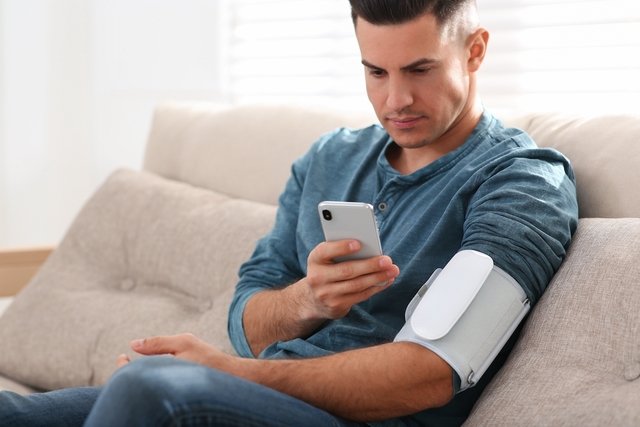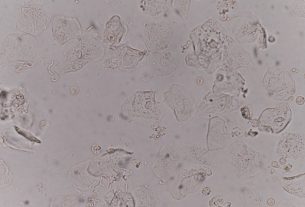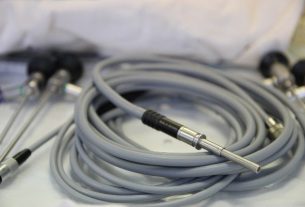The ABPM test, or ambulatory blood pressure monitoring, is a diagnostic test carried out using a device that allows blood pressure to be recorded over a 24-hour period, during usual day-to-day activities and even when the person is sleeping.
ABPM is recommended by a cardiologist to diagnose systemic arterial hypertension or to assess whether a specific drug treatment for high blood pressure is effective.
This exam can be carried out free of charge by the SUS, as long as it is medically indicated, or carried out in private clinics, allowing the assessment of variations in blood pressure in daily activities and manifestations of cardiovascular diseases, which may not be detected by measuring blood pressure in consultations. doctors.

What is it for
The MAPA exam is indicated in the following situations:
- Diagnose systemic arterial hypertension;
- Assess symptoms of hypotension;
- Identify changes in blood pressure during daily activities and when sleeping;
- Check for the presence of white coat hypertension in people who only have high blood pressure when they go to the office;
- Analyze high blood pressure during pregnancy;
- Assess sustained hypertension, which is high blood pressure, whether in the office or at home;
- Identify whether the person has masked hypertension, in which the person has normal blood pressure in the office, but high blood pressure at home;
- Identify nocturnal hypertension, in which blood pressure is high during sleep;
- Evaluate the effectiveness of high blood pressure medications.
Monitoring blood pressure for 24 hours through ABPM provides information about variations in blood pressure during sleep, wakefulness and in stressful situations, as well as detecting and predicting whether a person will develop diseases in the blood vessels of the heart and of the brain that are linked to hypertension. See more about the symptoms of high blood pressure.
How to prepare for the exam
To prepare for the MAPA exam, some precautions are necessary, such as:
- Carry out the exam, preferably, on days when the person will carry out their usual day-to-day activities so that it is possible to assess how blood pressure behaves over 24 hours;
- Maintain the use of daily medications according to the doctor’s instructions, informing the type, dose and time at which the medication is used;
- Avoid carrying out very heavy physical exercises in the 24 hours before and during the exam;
- Carry a belt so that you can secure the ABPM device.
Furthermore, before the device is installed on the person, it is necessary to wear a shirt or blouse with wide sleeves and buttoned at the front so as not to limit the movement of the arm, and women should avoid wearing a dress, as it is most often carried out together. with the 24-hour Holter exam. Find out more about what 24-hour Holter is for.
How is done
The ABPM test pressure device is installed in a clinic or hospital by placing an armband, also called a cuff, which is connected to an electronic monitor inside a bag that must be placed on a belt, so it can be easily transported. .
Generally, during the exam, the device checks the pressure every 30 minutes, so that at the end of the 24 hours, the doctor can check at least 24 pressure measurements.
During the exam you may feel discomfort, as the cuff tightens during the pressure check, and once the 24 hours are up, the person must return to the hospital or clinic to remove the device and so that the doctor can evaluate the data, indicating the most appropriate treatment according to the diagnosis found.
Care during the exam
The person can carry out their normal daily activities during the ABPM exam, however, some important precautions must be followed, such as:
- Prevent the cuff tube from being twisted or bent;
- Do not do heavy physical exercise or carry children on your lap;
- Do not take a shower, due to the risk of getting wet and damaging the device;
- Do not swim or use a sauna;
- Do not deflate the cuff manually;
- Do not press any button on the device to avoid disconfiguring it;
- Do not remove the device;
- Avoid sudden movements to avoid disconnecting the tube from the device.
During the period when the person is sleeping, they should not lie on top of the armband and the monitor can be placed under the pillow.
Furthermore, it is also important that, if the person takes any medication, write down in the diary or notebook the name of the medication and the time at which they took it, and then show it to the doctor.
See more about what to eat to lower high blood pressure:
We regularly update our content with the latest scientific information, so that it maintains an exceptional level of quality.
Bibliography
- PATEL, S. S.; DANIELS, S. R. Ambulatory Blood Pressure Monitoring in Pediatrics. Curr Hypertens Rep. 21. 9; 71, 2019
- DADLANI, A.; et al. Ambulatory blood pressure monitoring in clinical practice. Indian Heart J. 71. 1; 91-97, 2019
- BRAZILIAN SOCIETY OF CARDIOLOGY. V Brazilian Guidelines for Ambulatory Blood Pressure Monitoring (ABPM). Rev Bras Hipertens. Vol.18, n.1. 7-17, 2011
- GROSSMAN, Ehud. Ambulatory Blood Pressure Monitoring in the Diagnosis and Management of Hypertension. Diabetes Care. Vol.36 (Suppl 2). S307–S311, 2013
- BLOOD PRESSURE UK. 24-hour ambulatory blood pressure monitoring (ABPM). Available at: <http://www.bloodpressureuk.org/BloodPressureandyou/Medicaltests/24-hourtest>. Accessed on January 8, 2020

Sign up for our newsletter and stay up to date with exclusive news
that can transform your routine!
Warning: Undefined array key "title" in /home/storelat/public_html/wp-content/plugins/link-whisper-premium/templates/frontend/related-posts.php on line 12
Warning: Undefined array key "title_tag" in /home/storelat/public_html/wp-content/plugins/link-whisper-premium/templates/frontend/related-posts.php on line 13




